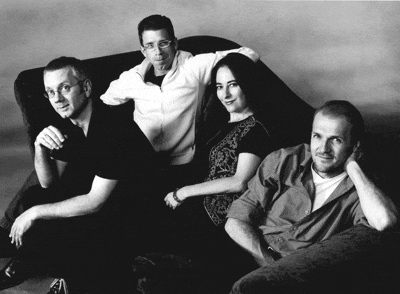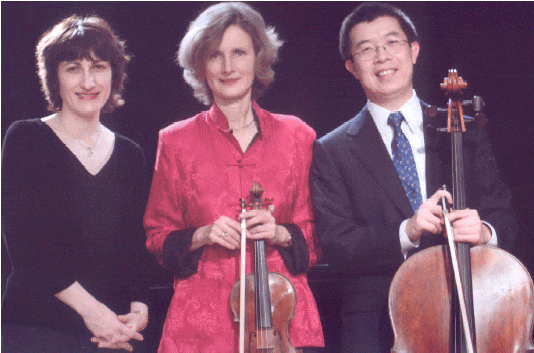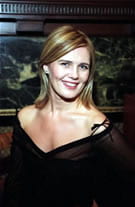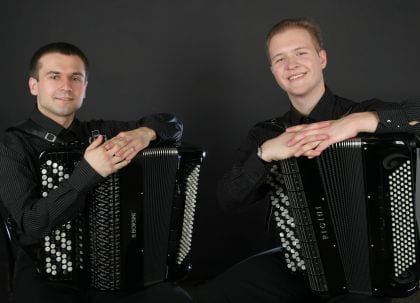Polish Music Center Newsletter Vol. 13, no. 10
PMC News
Paderewski Back in Los Angeles!
 After an absence of eighty-four years, Paderewski’s towering figure once again graces the campus of the University of Southern California. On 22 February 1923, Paderewski was recognized at a special ceremony with the honorary doctorate by this prestigious university. At 5 p.m. on 4 October 2007, the official unveiling of the Paderewski monument took place at USC, in front of a crowd of 200 patrons of the monument project, university officials, and other guests. The Ambassador to the United States, His Excellency Janusz Reiter, and the Consul General of Los Angeles, Hon. Paulina Kapuścińska, represented Poland’s government on this distinguished occasion. The First Lady of Poland, Maria Kaczyńska, the project’s honorary patron, was unable to attend the unveiling due to a commitment to the Paralympic athletes competing in Shanghai, China. USC officials, including the Dean of Music, Robert A. Cutietta, and the University Provost, C.L. Max Nikias, also attended the ceremony and gave touching tributes to Paderewski’s legacy at the University and in the world. Musical accompaniment for this festive occasion was provided by the Midnight Winds, including a performance of Paderewski’s most famous composition, the Menuet Op. 14.
After an absence of eighty-four years, Paderewski’s towering figure once again graces the campus of the University of Southern California. On 22 February 1923, Paderewski was recognized at a special ceremony with the honorary doctorate by this prestigious university. At 5 p.m. on 4 October 2007, the official unveiling of the Paderewski monument took place at USC, in front of a crowd of 200 patrons of the monument project, university officials, and other guests. The Ambassador to the United States, His Excellency Janusz Reiter, and the Consul General of Los Angeles, Hon. Paulina Kapuścińska, represented Poland’s government on this distinguished occasion. The First Lady of Poland, Maria Kaczyńska, the project’s honorary patron, was unable to attend the unveiling due to a commitment to the Paralympic athletes competing in Shanghai, China. USC officials, including the Dean of Music, Robert A. Cutietta, and the University Provost, C.L. Max Nikias, also attended the ceremony and gave touching tributes to Paderewski’s legacy at the University and in the world. Musical accompaniment for this festive occasion was provided by the Midnight Winds, including a performance of Paderewski’s most famous composition, the Menuet Op. 14.
At 6 p.m. , immediately after the ceremony, the annual Paderewski Lecture-Recital was presented at the Alfred Newman Recital Hall on the USC campus. This year’s program celebrated the musical opus of Krzysztof Meyer, one of the most prominent Polish contemporary composers. Although the composer was unable to join us due to a last-minute denial of his US Visa, his presence was felt through the music, so touchingly and skillfully performed by some of Southern California’s greatest musicians. On the program was Paderewski’s Nocturne Op. 16, No. 4 (Wojciech Kocyan, piano), Meyer’s Sonata per violoncello e pianoforte (Laśzló Mezö-Arruda, cello and Mary Au, piano), Meyer’s Canzona for Cello and Piano (Lars Hoefs, cello and Jan Bratoz, piano), and Meyer’s String Quartet No. 12, Op. 103 (Armen Derkevorkian & Ely Karr, violins, John Stultz, viola, and Sheng Zhang, cello).
The unveiling of the Paderewski monument at USC marks a very important milestone for the Polish community in Southern California. Paderewski is the first Polish national to be recognized with a monument in this part of the world. His links to the West Coast are considerable, as he owned huge tracts of land in the Paso Robles area, where he planted zinfandel grapes and almond tree orchards. More importantly, Paderewski’s patriotism, incredible generosity, years of tireless efforts and considerable self sacrifice, secured Poland’s freedom after World War I. It is very gratifying that in recognition of Paderewski’s role in Poland’s modern history many individuals and institutions have come together to support the initiative of placing Paderewski’s statue at the USC Thornton School of Music. The Polish Music Center, along with our fundraising partners—the Consulate General of the Republic of Poland in Los Angeles, Polish American Congress, Polish American Historical Association, and Polish National Alliance—gratefully acknowledge the generosity of the Polish American community in this endeavor.
[MZ, KC]
Paderewski Reprise In Paso Robles
By Betsy Cepielik
 On September 30 the lovely Paso Robles Inn Ballroom provided an elegant venue for the second Paderewski Reprise.
On September 30 the lovely Paso Robles Inn Ballroom provided an elegant venue for the second Paderewski Reprise.
During the 1990’s there were many very elaborate Paderewski weekend-long Festivals. With the death of festival founder Virginia Peterson and the Paso Robles earthquake, the festivals ended in 2003. In 2006 the first Reprise was held, with pianist Jonathan Plowright, at the Cass Winery, with an audience of 120. This year, approximately 300 people were in attendance. Due to the efforts of Virginia Peterson’s grandsons Joel and Josh, Paso Robles Mayor Frank Mecham, and Cass winery owner Steve Cass and his Polish wife Alicia, the festival has been revived. Plans are already underway for a more extensive event in 2008. We were pleased to interview Joel, and discovered that we had been on the same bus tour of Paso Robles, when the bus got stuck in the mud. He was 15 years old at the time.
Paso Robles is a very lovely small town (population 29,000) located midway between San Francisco and Los Angeles, on Route 101. Ignacy Jan Paderewski first came to Paso Robles in 1913, in order to treat the neuritis in his hands and arms at the hot springs of the Paso Robles Inn. He later purchased land there, where he grew almond and walnut trees and Zinfandel grapes. His home was the Paso Robles Inn.
This year’s Reprise began with the recital of the Paderewski Youth Piano Competition winners. The competition was held in conjunction with Cuesta College. The winner of the Junior Category was Max Eisendrath and the Senior Category Matthew Fauria. They, along with second and third place winners, performed works of Paderewski, Chopin, Debussy, and others at the opening event of the Reprise.
Following this concert, guests were able to view an exhibit of Paderewski memorabilia at the hotel. Besides the renowned Christine Smith collection, local residents contributed other items to display. The Paso Robles History Museum displayed the bed where Paderewski died. There was a movie shown in the Paderewski Room. Both screenings of “The Master of Tones and Man of State” were standing room only. A no host bar and refreshments were provided on the inn’s patio.
A short program of introductions was also held on the patio. Mayor Frank Mecham welcomed Consul General Paulina Kapuścińska, who traveled from the Consulate in Los Angeles to attend this event. The microphone was then handed over to Joel Peterson, grandson of Virginia Peterson. Mr. Peterson related that Paderewski was the Rolling Stones and Beatles of his time, in terms of the adulation showered on him and ability to attract huge crowds to his concerts. Steve Cass and Rachel Hamilton (from Cuesta College) were introduced, as well as Henryk Martenka, Director of the International Paderewski Piano Competition (from Bydgoszcz, Poland). Next year the Paso Robles winners will be invited to perform in Poland, and the winners of the Poland competition to perform in Paso Robles.
Seed money for the event was provided by the city of Paso Robles ($10,000. ) Private contributions were also given.
Then it was time for the main event – the Concert by renowned pianist Marek Żebrowski, who is also the Director of the Polish Music Center at the University of Southern California. Mayor Frank Mecham introduced Consul General Paulina Kapuścińska. The Consul General gave regrets from the First Lady of Poland, Maria Kaczyńska, who was unable to attend, due to being in China with handicapped Polish athletes. The next announcement was that pianist Krzysztof Meyer had been denied entry to the United States due to Visa regulations and would not be performing. Marek Żebrowski took center stage and gave an incredible performance. He flawlessly played Paderewski’s Cracovienne fantastique, Op. 14 no. 6. He was then joined by Lars Hoefs on the cello playing Stojowski’s Concerstück pour Violoncelle et Orchestre, Op. 31 and Chopin’s Polonaise Brillante for Cello and Piano, Op. 3. Following intermission, the duet was joined by Joel Pargman on the violin performing Chopin’s Piano Trio in G-minor, Op. 8. After a standing ovation, there was a world premiere of a transcription of Paderewski’s Chamber music for trio (originally written for piano). All present agreed it was an outstanding concert, and Marek Żebrowski did an outstanding performance, in both his own planned repertoire and filling in for the absent Meyer.
Congratulations to the organizers for an outstanding job. We will be looking forward to next year’s event. Paderewski Reprise organizers welcome anyone interested in helping. The Paderewski Reprise Committee can be reached at PO Box 272, Paso Robles, Cal. 93447, or Steve Cass at steve@casswines.com / (805)239-0873.
In a conversation with Mayor Mecham, we learned of another positive result of the reprise. Paso Robles will be applying to become a Sister City with a city in Poland!
Szymanowski Year
World Premiere Of Agawe
The world premiere of Karol Szymanowski’s cantata Agawe was given on the final concert of Polish Radio’s 10th Music Festival on Sunday, October 7, 2007. The performers included soprano Izabella Kłosińska, the Cracow Polish Radio Choir, and the Warsaw Polish Radio Orchestra under the direction of Łukasz Borowicz. The concert took place in the Lutosławski Concert Studio at Polish Radio in Warsaw.
Written in 1917, the cantata was never finished by the composer. Two different completions of the composition were given at the October 7 concert. Both orchestrations were based on the facsimile of the composer’s manuscript sketch of the piece. The first orchestration by British composer and musicologist Malcolm Hill was an academic completion of the work done in 1977. Currently retired, Mr. Hill was a professor of composition and musicology at the Royal Academy of Music and London University for 26 years. The second version, written by Polish composer Piotr Moss, was commissioned by Polish Radio for this year’s festival, entitled The Worlds of Szymanowski—Far and Near. Mr. Moss, who divides his time between Paris and Warsaw, was a student of the late Piotr Perkowski, who, in turn, studied with Szymanowski.
There are several differences regarding the editions. While Mr. Hill completed his version for mixed chorus, Mr. Moss wrote for women’s chorus. Although, Szymanowski scored his cantata for six French horns, both Hill and Moss chose to use only four horns. Another difference in the instrumentation is the use of the contrabassoon and tuba. Found in Hill’s completion, these two instruments are lacking in Moss’ version.
[JH]
Szymanowski In Philadelphia
By Dayle Vander Sande
On Sunday, August 19 at 3 p.m., the Philadelphia Chapter of the Kosciuszko Foundation presented a concert of music by the great 20th-century Polish composer Karol Szymanowski (1882-1937), in celebration of both the 125th anniversary of his birth, and the 70th anniversary of his death. The Sejm proclaimed 2007 as the Year of Karol Szymanowski, and many Polish-American organizations have eagerly produced a concert surveying his music. Those in attendance at the Ethical Society Building on Rittenhouse Square this rainy Philadelphia afternoon enjoyed a variety of diversions. A wine reception preceded the event, and one could place bids on beautiful original oil paintings in silent auction. At intermission there was more wine and some of Polonia’s greatest-tasting Polish pastries.
Upon meeting violinist Blanka Bednarz and pianist Matthew Bengtson, the audience was instantly warmed by their ease in presenting the program. Both musicians, having concentrated on Szymanowski for their doctoral degrees, preceded each piece with a concise introduction, erudite and academic, yet infused with personality and charm. This marked their tenth concert together in a five-year collaboration of playing Szymanowski’s music.
The program was an intelligent chronological overview of the composer’s body of work, as so many profile programs tend to be. Here, the placement of selections was masterfully designed to offer variety of style and mood, while alternating focus between violin and piano:
Sonata in D minor for Violin and Piano, Op. 9, first movement
Etudes, Op.4, Nos. 1 and 3
Myths for Violin and Piano, Op.30
~ Intermission ~
Sheherazade and Tantris the Clown from Masques, Op.34
Chant de Roxane, from the opera King Roger
Oberek from Four Polish Dances
Mazurkas, Op.50, Nos.13 and 14
Danse paysanne, from the ballet Harnasie
The sonata was one of Szymanowski’s and the great violinist Pawel Kochanski’s favorite pieces to perform together. The day’s artists established up front their fine musicianship and technical prowess, and demonstrated skilled ensemble playing, with a symbiotic understanding of mood upon entering a phrase together.
Myths for Violin and Piano was presented in its entirety. Here we are introduced to Szymanowski’s programmatic music, inspired by his trips to more exotic lands such as Greece and North Africa. Of particular note was the third movement, Dryades et Pan, a masterful work of musical narrative. At once you see Pan dancing across the keyboard in runs. Those of Mr. Bengtson were tight and clean, like talking staccati. Ms. Bednarz’s control was remarkable in the trills and harmonic passages, which imitate Pan’s flute. She played with great facility, perfectly in pitch, such that one would swear the violin turned into a wind instrument in her hands.
The pianistic highlight of the evening was Tantris the Clown. Mr. Bengtson entered into the role of a Pagliaccio as a great actor-pianist. His is a schizophrenic clown, easily shifting mood, color and character from phrase to phrase. His rendering was so compelling, that his clarity of tone and attack and rich Romantic sound could go easily unnoticed. Mr. Bengtson demonstrated courageous playing, as if he were conducting each key on the keyboard as a distinct instrument. The programming of only two movements of this opus was a tease. One hopes there will be a recording of the full cycle.
Transporting us further into operatic stories, we hear Chant de Roxane, from the King Roger, transcribed for violin and piano by Kochanski. Ms. Bednarz opens Roxane’s pleading solo soprano line with imploring sweetness. Yet through a solid tone, she establishes the heroine as a strong woman mustering all her might to appear before the king. When the piano enters, the duo’s brilliant choice of tempo betrays Roxane’s uneasiness, building in urgency as she submits her plea. Yet, her strength lies in tenderness, finishing in a peaceful cadence. The ensemble performed as one mind, staying in their scene from beginning to end. Here we experience the most moving playing of the concert. Both instruments, with vital tongues, never sacrifice storytelling for “beauty for beauty’s sake.” The players rightfully received a prolonged ovation.
In the next set, Mr. Bengtson was at home with the mazurka rhythm as if he were himself a Mazur. In the fast sections, one can imagine from his crisp tempi and rhythmic precision the high kicking boots, the flowing ribbons of the women’s flowery headdresses and the feathered caps of the men swirling around in flashes of color, vivacious and frantic, as the composer’s marking calls for. In Opus 50, No.14, one could hear a competition being struck up among the village men. Each character tries to outdo the other with their signature steps: the heavyweight, the gallant horseman, the lover all stomp and twirl, putting on a show to win over the girls. In the end, everyone is a winner – especially Mr. Bengtson for demonstrating such far-reaching imagination in bringing the mazurkas to life. His doctoral research and first studio recording was devoted to all 22 of Szymanowski’s mazurkas.

At this point, the audience was speaking and breathing Szymanowski. Exhilarated, one began to grasp what expertise and endurance is required to execute a program of this magnitude, and what a legacy of genius this composer gave of his soul to the world. We had been escorted through a unique musical journey by two gifted musicians. Then, in a musical exclamation point, the program concluded with a built-in finale, Danse paysanne,from the ballet Harnasie, also transcribed for violin and piano by Kochanski. There is little one can say to convey this stunning piece suitably on paper. It is not a piece of music; it is an experience. It is a portal that takes you to a mountain village in Zakopane where white-haired, light-blue-eyed men wear ecru woolen costumes with wide-brimmed hats and a band of shells; where they yell out throaty, high-pitched songs from one peak to another; where they fiddle out improvised tunes in odd modalities. The piece opens with a plaintive, other-worldly melody like an incantation awakening the Góral spirit. Then the violin flies through pizzicati and successive double-stop octaves and many other exploitative tricks that might make Paganini or Wieniawski break a sweat. The piano pounds out syncopated chord progressions and counterpoint staccati, and together they spin out a whirlwind of gutsy dance rhythms and folk melodies, which spiral faster and faster ending in a quick flourish. I was personally moved by this piece more deeply than any other in the lineup. The playing was magnificently accomplished, and exhibited a fundamental comprehension of the ethnicity in the music. But what fulfilled this piece more than any other element was the raw honesty in the playing of both violin and piano.
A more ambitious and fitting tribute could not have been imagined to commemorate the legacy of our hero, Karol Szymanowski and the heritage of Polish music.
Szymanowski Birthday Honors
The following performances honored Szymanowski not only in his anniversary year, but on his actual birthday, October 6 (1882), 125 years ago.
The first was the Warsaw Philharmonic 2007/2008 Season opening concert at the National Philharmonic Concert Hall in Warsaw. Performers for the event included the following: Antoni WIT – conductor; Anna Maria STAŚKIEWICZ – violin; Agnieszka KOZŁOWSKA – soprano; Magdalena ZIAJA – soprano; Małgorzata PAŃKO – mezzo-soprano; Tadeusz SZLENKIER – tenor; Mariusz CYCIURA – tenor; Wojciech GIERLACH – bass; and Henryk WOJNAROWSKI – choir conductor. The program consisted of Karol Szymanowski’s Mandragoraop. 43, Jean Sibelius’s Violin Concerto in D Minor, and Karol Kurpiński’s Te Deum.
The second was in Washington D.C. , with a concert of chamber and solo music presented by the Embassy of Poland. Entitled “An Homage to Karol Szymanowski,” the concert featured Anna Kijanowska, piano, Sharon Roffman, violin, and Clancy Newman, cello, performing Szymanowski’s Sonata op. 9 in D minor for violin and piano, transcribed for cello by Kazimierz Wiłkomirski.
Szymanowski Gala
On Saturday October 13 at 2 pm in New York City, an amazing group of musicians will present an All-Szymanowski program in honor of the composer’s birth-anniversary this month. The concert will take place at Weill Recital Hall in Carnegie Hall. Presented by the Kosciuszko Foundation, the performers include: the Penderecki String Quartet (Jeremy Bell and Jerzy Kaplanek, violin, Christine Vlajk, viola, and Simon Fryer, cello); Hanna Lachert, violin with Hélène Jeanney, piano; Anna Kijanowska, piano; and Edyta Kulczak, soprano with Steven Eldredge, piano. The confluence of these outstanding musicians will surely give proper honor to the memory of Karol Szymanowski.
For more information visit the Kosciuszko Foundation website, and to purchase tickets contact CarnegieCharge at (212) 247-7800 or Carnegie Hall.
For more Szymanowski items, see Book Reviews below.
News
Stanienda At USC
Polish violinist Jan Stanienda will be visiting USC’s Thornton School of Music again this fall. On October 23rd, he will give a Visiting Artist Masterclass, sharing his skills and experience with the USC community. Then on October 25th, he will take the reins of the USC Thornton Chamber Orchestra, presenting a program of Telemann’s Don Quichotte, Mozart’s 40th Symphony and Vivaldi’s Concerto for Three Violins. Both events are free and open to the public.
Jan Stanienda studied with Krzysztof Jakowicz at the F. Chopin Academy of Music in Warsaw. In 1976, he was a prize winner at the Nicolo Paganini International Violin Competition in Genoa. Stanienda joined the Polish Chamber Orchestra in 1975 and two years later became its concertmaster and soloist, performing throughout Europe and the world. He became the concertmaster of Sinfonia Varsovia in 1986 and the leader of Leopoldinum and the Wratislavia Chamber Group in 1992. As a concertmaster of various orchestras and as a soloist, he has performed extensively in major concert halls worldwide, including Carnegie Hall in New York, Philarmonie Hall in Berlin, Concertgebouw in Amsterdam, Auditorio Nacional de Musica in Madrid, Barbican Center and Royal Albert Hall in London and Santa Cecilia in Rome. He has performed with many distinguished musicians, including Sir Yehudi Menuhin, Michaela Petri, Wanda Wilkomirska, Krzysztof Jakowicz, Grzegorz Nowak, Nigel Kennedy, Janos Starker, Barbara Hendricks and Fou Ts’ong. In 1991-92 he was the premier violin soloist of Orchestre de Chambre de Toulouse. On January 1, 1992, Stanienda conducted a Concert for Peace in Dubrovnik with Barbara Hendricks and Orchestre National de Chambre de Toulouse. At present, Stanienda heads the violin class at the Academy of Music in Warsaw and is artistic director of the Wratislavia Chamber Orchestra. He has made recordings for various recording companies, including Aperto, Linn Records, Pavane, Kos Records Warsaw, Dux and Tonpress, as well as for radio and television in Poland and France.
Visiting Artist Masterclass – Jan Stanienda
23 October 2007, 5:15 p.m.
University of Southern California
Torrey Webb room (behind Alfred Newman Recital Hall)
Free and open to the public
Jan Stanienda with the USC Thornton Chamber Orchestra
25 October 2007, 7:30 p.m.
University of Southern California
Bovard Auditorium
Free and open to the public
World Premiere For Moss
 On Sunday, October 14, the world premiere of Polish composer Piotr Moss’s L’arbre aux corbeaux, the first movement of his Cinq tableaux de Caspar David Fiedrich, will take place in Paris at the Théatre des Champs-Elysées. The work, commissioned by the organization Musique nouvelle en liberté will be performed by the Orchestre Lamoureux under the direction of its artistic director, the well-known Japanese conductor Yutako Sado. The remaining movements of the work will be performed during the orchestra’s current concert season, and the entire composition will be heard for the first time on June 1, 2008.
On Sunday, October 14, the world premiere of Polish composer Piotr Moss’s L’arbre aux corbeaux, the first movement of his Cinq tableaux de Caspar David Fiedrich, will take place in Paris at the Théatre des Champs-Elysées. The work, commissioned by the organization Musique nouvelle en liberté will be performed by the Orchestre Lamoureux under the direction of its artistic director, the well-known Japanese conductor Yutako Sado. The remaining movements of the work will be performed during the orchestra’s current concert season, and the entire composition will be heard for the first time on June 1, 2008.
Giziewski & Sulej Accordion Duo
On Sunday, October 20th, the classical accordion duo of Hubert Giziewski & Pawel Sulej will grace Southern California audiences in 2 venues on the same day: Trinity Lutheran Church and Loyola Marymount University. Their program is entitled “Dances of the World” and will include works by Trojan, Khachaturian, Shalaev, Paciorek, Monti, Piazzolla, Bizet/Horowitz, Enescu, and Bach. Jeffrey James, Editor of International Composer, described Duo Giziewski-Sulej after their April 2006 concert at Carnegie Hall as follows:
Anyone, who thinks the accordion is either dull or not really an instrument fit for classical music hasn’t heard these boys tear up. Performances like this leave little room for anything other than superlatives… I cannot say enough about the high quality of their musicianship and almost inhumanly good integration of sound, so I’ll just leave things at hoping to hear them again very soon.
Hubert Giziewski and Pawel Sulej graduated with honors from Frederic Chopin Academy of Music in Warsaw and are prize-winners of numerous competitions including the National Accordion Competition in Mlawa (2005), Concorso Internazionale Città di Castelfidardo (2006, Italy), Ibla International Music Competition (2005, Italy). As soloists and chamber music players they have performed in the world’s leading concert halls including Suntory Hall (Japan), Carnegie Hall, Esplanade Art Center (Singapore), Polish Radio Concert Hall S1, and with the Warsaw National Philharmonic.
Presented by “Preview Concert Series” Artistic Director Laura Schmieder:
Saturday, October 20, 2007 at 2:00 p.m. Trinity Lutheran Church
1340 Eleventh Street, Manhattan Beach, CA 90266
Admission is Free – donations appreciated
For more information, call (310) 937-7275
www.palosverdes.com/TLCmusic/tlcmbs2.htm
Presented by the Helena Modjeska Art and Culture Club of Los Angeles:
Saturday, October 20th at 7:00 pm
Murphy Recital Hall at Burns Fine Arts Center
Loyola Marymount University
1 LMU Dr. , Los Angeles, CA 90045
Free Parking (www.lmu.edu/maps)
Wine and refreshments will be served after the concert.
Reservations: Dorota Olszewska 805 529 9856 or Elżbieta Kańska 323 462 6428 or 310 860 4204
Admission $15
Please make checks payable to Modjeska Art and Culture Club and mail to: Dorota Olszewska, 12466 Sunnyglen Drive, Moorpark, CA 93021.
Piano Makers In Peril
The last remaining maker of pianos in Poland will most likely close down operations. This news comes after the meeting of the board of trustees. After the liquidation of a piano factory in Legnica, Calisia was the only piano maker left in Poland. In good times the company sold around 400 upright and grand pianos a year and held contracts with institutions in Germany, France, Switzerland, Italy, Finland, Netherlands, Russia and USA. Unfortunately, for past few years the company has struggled financially and the debt has grown beyond what the company might be able to recover. It is hard to predict if the company will be able to exist in some other form until the liquidation procedures are concluded.
The School of Piano-making in Kalisz is planning to continue as it was despite the problems at the related institution. The school is the only one of its kind in Europe and one of only three in the world. It trains future piano technicians and builders and for a long time has had a close relationship with Calisia. Students from the school had internship opportunities at the factory and were able to gather first-hand experience in piano making. There is a consistent job market for piano technicians and the school receives many job offers for the graduates both in Poland and abroad.
Tadeusz Sobczak, who is in charge of the Calisia liquidation, says that the current market is very hard for piano-makers. It is flooded with cheap instruments from China and Taiwan. The main reason for Calisia’s failure is the lack of priority contracts with Polish cultural institutions and protection from the government. “The shut-down of the Calisia factory is a great loss for the music industry in Poland and abroad, but such is the market,” said Sobczak.
The Calisia piano factory in Kalisz was established in 1878 by Arnold Fibiger. At the time the company was called “Arnold Fibiger Fabryka Fortepianów i Pianin w Kaliszu spółka jawna” [Arnold Fibiger Piano and Grand-Piano Factory in Kalisz public company]. Except for a short break during the wars, the company has produced pianos constantly.
Calisia was one of the few remaining elite companies where pianos were hand-assembled by the manufacturer. It was also a well established re-builder of antique pianos from around the world. The instruments made in Kalisz received awards at the international expos in New York, London and Paris. Many great pianists held the Calisia pianos in high regard, among them: Artur Rubinstein, Witold Małcużyński, Jan Ekier, Halina Czerny-Stefańska and Krystian Zimermann. To read more about Calisia please visit www.calisia.pianina.pl.
In related news, Bloomberg financial information service has reported the following: “Pianos Pleyel, France’s last piano maker, is cutting annual production and opening a new showroom in Paris as it struggles to overcome three decades of losses and tackle competition from China and U.S. -based Steinway Musical Instruments Inc. ” Pleyel pianos were Frederic Chopin’s piano of choice. Read the entire article and see a slidewhow of Delphine Lize performing Chopin’s Waltz No. 7 in C-Sharp Minor, Op 64 no. 2 on a Pleyel P280 here: www.bloomberg.com/apps/news?pid=newsarchive&sid=at8hVcg0pSNY.
[from “Chopin’s French Piano Maker in Battle for Survival. ” 10 October 2007. Bloomberg L.P.]
“Kochanski” Guarneri Will Benefit Curtis Inst.
Professor Aaron Rosand was once a student of violin at the Curtis Institute of Music in Philadelphia in the 1940s and now, at 80 years of age, he is a respected professor at that same institution. Since 1957, Mr. Rosand has owned and performed on the famous “Kochanski” Guarneri del Gesù violin, which he calls his “dream instrument. ” Mr. Rosand has pledged to donate $1.5 million from the sale of his instrument upon retirement to his beloved school. This donation will endow the newly created Aaron Rosand Chair in Violin Studies. According to the New York Times, “The Kochanski dates to 1741 and is considered one of the finest Guarneri violins around. It is named for Paul Kochanski (1887-1934), a Polish virtuoso who owned it for a time. Other Guarneri violins have sold for many times the $1.5 million pledge. ”
[Quotes and information taken from “This Violin Is to Give Far More Than Music” by Daniel J. Wakin. New York Times, 15 September 2007.]
Kraków Opera News
Bogusław Nowak has been offered the position of General Director of Kraków Opera. His candidacy was chosen over three other applicants and awaits ministerial approval. Nowak served as the director of Kraków Opera before, from 2001 to 2004, and in 1984-85 he served as the Administrative Director. This news came a week before agents of the Polish Anti-Corruption Agency arrested Rafał S. for accepting a bribe of 1 million PLN (ca. $350,000) for the approval of the project of the new building for the opera company. In connection with this case, the current director of the Opera, Piotr Rozkrut, is also under investigation for corruption charges. Director Rozkrut denies any involvement and points to his troubled relationship with local officials as the reason for the accusations.
Drzewiecki Tours Japan
 Starting on October 31 Polish pianist Stanisław Drzewiecki will tour Japan. The tour will last until November 30 and will include 19 performances in all major concert venues. For more information about the pianist and a complete calendar of the tour please visit Drzewiecki’s official website.
Starting on October 31 Polish pianist Stanisław Drzewiecki will tour Japan. The tour will last until November 30 and will include 19 performances in all major concert venues. For more information about the pianist and a complete calendar of the tour please visit Drzewiecki’s official website.
Films Of Lech Majewski
A Polish artist who works internationally, Lech Majewski is known for the films and videos he writes, directs, shoots and scores himself. A graduate of the Łódź Film School, he is also a poet, painter and stage director. Majewski’s stylized works for the screen eschew language for music and fantastical landscapes. His imaginative films are all distinguished by a sensibility that hovers between the absurd and the metaphysical, the profane and the beautiful.
Six of Majewski’s films will be screened during a 3-day program entitled “CONJURING THE MOVING IMAGE: THE FILMS OF LECH MAJEWSKI” at the Billy Wilder Theater in Los Angeles. October 21: Glass Lips [Szklane usta] & Angelus; October 28: Gospel According to Harry [Ewangelia wedlung Harry’ego] & Wojaczek; and October 31: The Roe’s Room [Pokój Saren] & Garden of Earthly Delights.
This program is made possible with support from the Polish Film Institute and Silesia Film. Introduction and notes adapted from text from the Museum of Modern Art (New York) and International Film Circuit.
Conjuring The Moving Image: The Films Of Lech Majewski
Billy Wilder Theater
10899 Wilshire Blvd. @ Westwood Blvd. , Los Angeles
(courtyard level of the Hammer Museum)
Advance tickets are available for $10 at cinema.ucla.edu/onlineboxoffice/. Tickets are also available at the Billy Wilder Theater box office starting one hour before showtime.
“A Family Legacy of Music”
Read a touching story about the passing on of the love of music from one generation to another, from Poland to America, in the Citizen’s Voice (Wilkes-Barre, PA). According to the Editor’s Note for the article, entitled “A family legacy of music,” the article was written by, “The Sunday Voice intern and King’s College senior, Ryann Grochowski, [who] talks about one of her favorite people, her grandfather, in a first person account of her opportunity to live, love and learn from him throughout her life. ” The article is available at: citizensvoice.com/site/index.cfm?newsid=18799239&BRD=2259&PAG=461&dept_id=455154&rfi=8
Awards
ZKP Ochlewski & Honorary Awards
 The Tadeusz Ochlewski Composition Competition is organized annually by the Polish Composer’s Union (ZKP). Each year a different instrument subject is designated for the eligible works. This year the composition was for trombone solo and the award ceremony took place on September 22nd. The jury consisting of Zdzisław Stolarczyk (trombone player from the Polish Radio National Symphony Orchestra), Zygmunt Krauze (composer), and Andrzej Kosowski (Editor-in-chief of PWM) chose the following laureates:
The Tadeusz Ochlewski Composition Competition is organized annually by the Polish Composer’s Union (ZKP). Each year a different instrument subject is designated for the eligible works. This year the composition was for trombone solo and the award ceremony took place on September 22nd. The jury consisting of Zdzisław Stolarczyk (trombone player from the Polish Radio National Symphony Orchestra), Zygmunt Krauze (composer), and Andrzej Kosowski (Editor-in-chief of PWM) chose the following laureates:
1st Prize – Jakub Polaczyk for Kombinacje na Olimpie[Combination on the Olymp]
Honorary mention – Łukasz Godyla for Cyrkulacje [Circulations]
Both compositions will be published by PWM (Polish Music Editions) by the end of this year.
Also, on September 28, 2007, ZKP presented its annual honorary awards. The ZKP Honorary Award was established in 1949 to honor individuals and institutions promoting Polish contemporary music. This year’s winners are the Polish Contemporary Music Society for their organization of the annual “20th and 21st Century Music Competition for Young Performers” and the Arts Institute Society for their organization of the “International Contemporary Chamber Music Competition. ”
Contemporary Chamber Music Comp. Results
The 11th edition of the Contemporary Chamber Music competition, organized by the Institute of Art, took place in Kraków between August 30 and September 2, 2007. The jury consisted of highly esteemed artists, including Jan Pilch (chairman), Hanna Kulenty, Geoffrey Douglas Madge, Paul Patterson and Tadeusz Wielecki. The competition is arranged into 4 categories based on ensemble: solo, duo, trio and quartet. Each of these categories receives respective awards and there is a Grand Prix for the best artist or ensemble of the competition. This year’s results are:
Overall Awards:
GRAND PRIX ex aequo:
- Berolina Trio [Eriko Makimura (Japan), Katarzyna Górska (Poland), Krzysztof Polonek (Germany)]
- Sonic.art quartet [Ruth Velten (Germany), Alexander Doroshkevich (Germany), Martin Posegga (Germany), Annegret Schmiedl (Germany)]
Marek Stachowski award for interpretation of a work by Polish composer:
- Paul Hübner (Germany) for Hanna Kulenty’s Brass No. 1 for Double-Bell-Trumpet
Special award for interpretation of a work by Dutch composer:
- Piano Duo Lp: Sonja Loncar (Serbia), Andrija Pavlovic (Serbia) for Chiel Meiyering’s Hard Balls
“Bravissimo!” Award of Polish Institute in Stockholm for the best up-and-coming Polish artist:
- Natalia Koziarz (Poland)
Solo category:
| 1st prize | 2nd prize | 3rd prize | Special mentions: |
| Bartosz Koziak (Poland) | – Stanisław Bromboszcz (Poland)
– Paul Hübner (Germany)
|
– Anna Stegmann (Germany)
– Chin-Cheng Lin (Taiwan)
|
– Ayako Kitanaka (Japan) – Bruno Philip (Croatia) – Eneasz Kubit (Poland) – Grzegorz Palus (Poland) |
Duo category:
| 1st prize | 2nd prize | 3rd prize | Special mentions: |
| Piano Duo Lp [Sonja Loncar (Serbia) Andria Pavlovic (Serbia)] |
Duo irRUPTion [Rémi Durupt (France), Laurent Durupt (France)] |
Not awarded
|
Duo Deschacht [Mutkowska: Franke Deschacht (Belgium), Anna Mutkowska (Poland)] |
Trio category:
| 1st prize | 2nd prize | 3rd prize |
| Berolina Trio
[Eriko Makimura (Japan), Katarzyna Górska (Poland), Krzysztof Polonek (Germany)] |
Not awarded
|
‘conash trio’
[Kazuko Tsuji (Japan), Michał Poniżnik (Poland), Michał Dąbek (Poland)]
|
Quartet category:
| 1st prize | 2nd prize | 3rd prize |
| Sonic.art quartet [Ruth Velten (Germany), Alexander Doroshkevich (Germany), Martin Posegga (Germany), Annegret Schmiedl (Germany)] |
Not awarded
|
Vistula Quartet [Zofia Konieczna (Poland), Oriana Bogdanowicz (Poland), Maria Dutka (Poland), Piotr Głuszyński (Poland)] |
Int’l Spisak Competition
The 1st International Michał Spisak Music Competiton has attracted almost a hundred young musicians from around Europe and Asia. This competition evolved out of last year’s national competition and was conducted in three instrumental groups: oboe, clarinet and bassoon. The competition was open to musicians under the age of 29. The results of the competition were announced on September 27, 2007.
Oboe category:
- I prize and gold medal – Viola Vilmsen (Germany)
- II prize and silver medal – Balla Tomás (Hungary)
- III prize and bronze medal – Lorena Gawara (Poland)
Honorary mention – Paulina Kaczmarczyk (Poland)
Clarinet category:
- I prize and gold medal – Dawid Jarzyński (Poland)
- II prize not awarded
- III prize and bronze medal ex-aequo – Krzysztof Krzyżanowski (Poland) and Yauhen Shymanovich (Belarus)
Bassoon category:
- I prize and gold medal ex-aequo – Arkadiusz Adamczyk (Poland) and Zsófia Stefán(Hungary)
- II prize not awarded
- III prize and bronze medal ex-aequo – Daniel Hucek (Czech Republic) and Katarzyna Zdybel (Poland)
 Michał Spisak (1914-1965) was born in Dąbrowa Górnicza, graduated from Katowice Music Conservatory and spent most of his creative life in Paris. He was a brilliant representative of Polish 20th Century neo-classicism. His creations include symphonic, chamber and solo music, with the most valuable compositions written after World War II.
Michał Spisak (1914-1965) was born in Dąbrowa Górnicza, graduated from Katowice Music Conservatory and spent most of his creative life in Paris. He was a brilliant representative of Polish 20th Century neo-classicism. His creations include symphonic, chamber and solo music, with the most valuable compositions written after World War II.
Maria Fołtyn Honored
The Polish Cultural Foundation has awarded their “Golden Scepter” Award to Maria Fołtyn. She received the award for “outstanding artistic merit in the vocal arts as well as directorial and educational achievements. ”
Maria Fołtyn was a soloist of opera companies in Warsaw, Leipzig, Lubeka and Łódź. She has won numerous international awards, received international acclaim and performed throughout Europe, Canada and the United States. In 1971 she debuted as a director with a staging of Halkain Havana, Cuba. Since then she has prepared numerous operatic premieres in Poland and abroad. For over 20 years she was the driving force behind the Moniuszko Festival in Kudowa Zdrój.
This is the 8th time this award was given by the Foundation. Previous recipients include: Jerzy Giedroyć, Wojciech Kilar, Stanisław Lem, Roman Polański, Ewa Podleś, Sławomir Mrożek, and Tadeusz Różewicz. This year’s election board included: Beata Tyszkiewicz, Bogusław Kott, Agnieszka Duczmal, Aleksander Krawczuk, Wacław Sadkowski, Rafał Skąpski, and Andrzej Strumiłło.
Promoters Of Polish Culture Honored
Polish Foreign Affairs Minister recently honored people who are dedicated to the promotion of Polish culture around the world. Among those who received the diplomas were: Leszek Możdżer(composer, pianist), the Palestinian Frederic Chopin Society, Yi Lijun (Polish literature translator), Masahiro Taguchi (author of publications about Poland), Tokimasa Sekiguchi(professor of Polish Language and Culture studies in Tokyo), Władimir Britaniszski (Russian writer and translator of Polish literature, George Kolankiewicz (promoter of Polish affairs in Great Britain), and Jan A.P. Kaczmarek (composer). Also awarded: The Delhi Music Society, Dmytro Sapiha (owner of the publication Kameniar) and The National Shrine of Our Lady of Czestochowa in Doylestown, PA. The Minister, Anna Fotyga, stressed that the work of these individuals and organizations is responsible for building a positive reputation for Poland around the world.
Books Reviews
Recent Szymanowski Books In English
By Niall O’Loughlin
- Szymanowski on Music: Selected Writings of Karol Szymanowski, edited and translated by Alistair Wightman. Toccata Press, London, 1999
- Alistair Wightman: Karol Szymanowski, His Life and Work. Ashgate, Aldershot, UK, 1999
- Stephen C. Downes: Szymanowski, Eroticism and the Voices of Mythology. Royal Musical Association/Ashgate, Aldershot, UK, 2003
For many years after his death in 1937, Karol Szymanowski’s music was little known in the English-speaking world. It is true that he did visit London on a number of occasions, but his presence seems to have had little impact and the onset of World War Two made contact with the music of other countries very difficult or impossible. It was only in 1967 that Bogusław M. Maciejewski’s modest but pioneering book, Karol Szymanowski: his life and music, was published in London by the Poets and Painters Press, with an enthusiastic preface by the distinguished critic Felix Aprahamian. In a review of this book in The Musical Times, Robert Henderson recognised the many contradictions in the composer’s life and work, but, despite the excellent work of the BBC and a number of informed musicians, he noted with some regret: ‘There have been few signs of any appreciable growth of interest in the music of Szymanowski’. This book was followed by the publication in 1970 by the Allegro Press of the useful documentary book, Karol Szymanowski and Jan Smeterlin: correspondence and essays, translated into English and edited by Maciejewski and Aprahamian. We should note that both of these books were produced by small and little known publishers, and they did not have very wide circulation. Meanwhile Szymanowski’s music remained stubbornly unknown. A useful book with photographs and biography by Teresa Chylińska, entitled simply Szymanowski, which was translated into English and published in New York in 1973 by Twayne Publishers and the Kosciuszko Foundation, was a specialist publication of particular interest to Polish people living in the United States.
There had been much work going on in the background, however, particularly by Teresa Chylińska and by British scholars and musicologists, especially Hugh Macdonald, Jim Samson and Alistair Wightman. Wightman completed a doctorate on Szymanowski in the University of York in England in 1972, and although this was not published at the time, his research was known among a group of enthusiasts. Slowly Wightman’s work emerged as a series of his articles appearing in The Musical Times. His modest introduction to King Roger in connection with the first British performances of the opera was followed by an extended article which discussed in illuminating detail the little known settings that Szymanowski made of poems by James Joyce and another essay on the fundamental influence of Mediterranean and Arabic music on his style. With the appearance of Jim Samson’s Music in Transition (London, 1977), we had a clear indication in one chapter of the real stature of Szymanowski, but it was only with the publication in 1980 of Samson’s The Music of Szymanowski that the greatest strides were made to establish the composer’s reputation in the English-speaking world. Here was an outstanding book which analysed the music with great insight and a full awareness of the composer’s historical position, identifying the musical contradictions and appreciating the stylistic significance of his music. The fact that it is still available over 25 years later is a tribute to its lasting importance. Hugh Macdonald in The Musical Times summed it up in one sentence: ‘At last, a book to fill a yawning gap in music literature’. A smaller but equally important book appeared in 1983, Christopher Palmer’s Szymanowski, published significantly by the BBC. A compact volume of just over 100 pages, it gives a brief biography as well as an astute assessment and an informed discussion on selected important works – an ideal introductory work to the composer. It is full of wonderful insights, always keeping the composer in a clearly balanced perspective. Both Samson and Palmer acknowledge the work of Alistair Wightman, so it is with high expectation that we approach his books on Szymanowski. It has to be said with great understatement that we are not disappointed.
 Wightman’s book compiling Szymanowski’s writings is a classic. It opens with an appraisal of the composer’s life and thoughts as indicated by his numerous writings, given in some considerable detail. Wightman’s opening sentences indicate the composer’s character: ‘A recurring theme in both Szymanowski’s polemical writings and his correspondence is his sense of estrangement from Polish musical circles and, at times, Polish society in general. In a very real sense, he was an outsider. ’ (p.13) His documentation of the sources of inspiration and artistic stimulation are given in impressive detail, quoting where appropriate from the writings themselves. For a composer of such contradiction and complexity to have left such a body of written works is a huge bonus to anyone who wants to understand this fascinating music. The translations read beautifully with a flow and natural sense of expression that makes one forget that they were not written in English. The choice of texts is admirable, too, making the book manageable in size without missing out any important material. The organisation into sections matches the periods in the composer’s life, although the actual order is not chronological. In his early years, one can note Szymanowski’s frustration in finding the musical situation in Warsaw so backward, but at the same time observing that his ambitious aim to be a fully European composer made him even more isolated in Polish musical society. Clearly he had to gain his basic technique as a composer, an achievement for which he needed a full understanding of nineteenth-century music. That he had grasped the full implications of his inheritance is made clear in his appreciation of the music of Chopin, his assessment of the whole topic of romanticism in music in its many elements and what he considered to be romanticism in the twentieth century. There is rather less material on the ‘impressionistic’ influences on the composer, the ideas that he absorbed from his travels to Italy and North Africa, but it is clear that these played a great part in his music during the First World War, in the works that are most likely to be the ones by which we remember him. The section on folk music and nationalism completes the picture of his composing career, relating to the music that he composed in the last period of his life. Like many other twentieth-century European composers he addressed the issue of absorbing national music into his art music, as had Bartók and Kodály in Hungary and Vaughan Williams in England. Other writings very helpfully included are some on education, a subject that had given him great trouble during his tenure as head of the Conservatoire in Warsaw in the late 1920s. Overall, then, one can gain great insight in this collection of essays into the character and music of Szymanowski.
Wightman’s book compiling Szymanowski’s writings is a classic. It opens with an appraisal of the composer’s life and thoughts as indicated by his numerous writings, given in some considerable detail. Wightman’s opening sentences indicate the composer’s character: ‘A recurring theme in both Szymanowski’s polemical writings and his correspondence is his sense of estrangement from Polish musical circles and, at times, Polish society in general. In a very real sense, he was an outsider. ’ (p.13) His documentation of the sources of inspiration and artistic stimulation are given in impressive detail, quoting where appropriate from the writings themselves. For a composer of such contradiction and complexity to have left such a body of written works is a huge bonus to anyone who wants to understand this fascinating music. The translations read beautifully with a flow and natural sense of expression that makes one forget that they were not written in English. The choice of texts is admirable, too, making the book manageable in size without missing out any important material. The organisation into sections matches the periods in the composer’s life, although the actual order is not chronological. In his early years, one can note Szymanowski’s frustration in finding the musical situation in Warsaw so backward, but at the same time observing that his ambitious aim to be a fully European composer made him even more isolated in Polish musical society. Clearly he had to gain his basic technique as a composer, an achievement for which he needed a full understanding of nineteenth-century music. That he had grasped the full implications of his inheritance is made clear in his appreciation of the music of Chopin, his assessment of the whole topic of romanticism in music in its many elements and what he considered to be romanticism in the twentieth century. There is rather less material on the ‘impressionistic’ influences on the composer, the ideas that he absorbed from his travels to Italy and North Africa, but it is clear that these played a great part in his music during the First World War, in the works that are most likely to be the ones by which we remember him. The section on folk music and nationalism completes the picture of his composing career, relating to the music that he composed in the last period of his life. Like many other twentieth-century European composers he addressed the issue of absorbing national music into his art music, as had Bartók and Kodály in Hungary and Vaughan Williams in England. Other writings very helpfully included are some on education, a subject that had given him great trouble during his tenure as head of the Conservatoire in Warsaw in the late 1920s. Overall, then, one can gain great insight in this collection of essays into the character and music of Szymanowski.
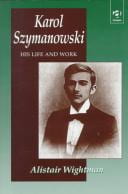 To turn to Karol Szymanowski, His Life and Work, Wightman’s magnum opus of nearly five hundred pages, it is a wonderfully refreshing and highly illuminating book. Its broad sweep is biographical and chronological, but the text always stops for discussion of the music whenever appropriate. What is impressive is the almost comprehensive collection of sources used intelligently and interestingly throughout the book. Clearly, having had much first-hand contact with the composer’s writings, the author used them as a very effective part of his narrative. He has chosen to introduce and characterise each of his chapters with an excellent and well focused point of reference. For example, chapter one sets the tone of Szymanowski’s Europeanism, chapter two, his father’s insistence on him studying in Warsaw, chapter three, the musical importance of the ‘Young Poland’ group, and chapter four ‘the clarification and concentration of Szymanowski’s rapidly expanded musical style’ and the early travels to Italy, North Africa, Paris and London. This leads naturally and inevitably to the substantial, 70-page chapter entitled ‘Rapprochement’, which treats the period from 1914 to 1917 in the detail it richly deserves. The author has no illusions about this when he writes: ‘The three years that followed Szymanowski’s return from London – from August 1914 to October 1917 – proved to be the most creative period of his entire career. ’ (p.134) Here, of course, is the composer’s full blossoming of his so-called impressionist works, the orchestral version of the Love Songs of the Hafiz, the visionary and exotic Third Symphony, the revolutionary Mythes for violin and piano, the piano pieces Métopes and Masques, the Third Piano Sonata, the vividly programmatic Violin Concerto No.1, and the First String Quartet. Wightman concentrates on the essence of these splendid works with well chosen musical examples that pinpoint key features, without attempting full detailed analysis. What is most impressive is the way that he relates the secondary sources to the music, essential for full understanding of the significance of the music itself. In his discussion of the individual works, he constantly identifies the important aspects, for example, the fact that in Mythes it is not the techniques that are new, but the way in which they are combined. The form of some of the works is correctly shown to be very significant in the composer’s development, as we can see in the cases of the Third Symphony with its vocal sections bisected by a dance and of the multi-tempo single-movement First Violin Concerto. Following these, the work that acts as a bridge to Szymanowski’s last period, the opera Król Roger [King Roger], is seen as central to the composer’s output. Conceived possibly during Szymanowski’s travels to Sicily in 1911 and created and developed in the years 1918-24, it demands very close attention. Again Wightman clearly realises the problems with the opera when he says that the work is ‘so original in conception and elevated in subject matter’ that it has sometimes been misunderstood. This issue he tackles with determination and enthusiasm. He also gives some idea of the contents of Szymanowski’s erotic novel, Efebos, written in the years 1916-17 and now largely destroyed or lost, the fragments which survive, and how it can be thought of as a ‘subtext’ to the opera. The last part of Wightman’s book concentrates on what the composer called his ‘lechitic’ style, his return to more simple textures, classical techniques and forms, and the use of elements of Polish folk music. The essence of Szymanowski’s last period is accurately defined in a series of excellent sections which discuss in some detail important works such as the Stabat Mater, the Fourth Symphony, the Second Violin Concerto, and the strongly folk-inspired works, the ballet Harnasie and the String Quartet No.2. What also emerges is Szymanowski’s catastrophic personal situation, fatally ill with tuberculosis and barely able to maintain his creativity; it is a story of great courage and determination that is conveyed lucidly by Wightman. The book as a whole is a magnificent achievement, full of insight and generously documented. Szymanowski’s music will be illuminated for anyone reading it, with valuable observations about its significance and importance.
To turn to Karol Szymanowski, His Life and Work, Wightman’s magnum opus of nearly five hundred pages, it is a wonderfully refreshing and highly illuminating book. Its broad sweep is biographical and chronological, but the text always stops for discussion of the music whenever appropriate. What is impressive is the almost comprehensive collection of sources used intelligently and interestingly throughout the book. Clearly, having had much first-hand contact with the composer’s writings, the author used them as a very effective part of his narrative. He has chosen to introduce and characterise each of his chapters with an excellent and well focused point of reference. For example, chapter one sets the tone of Szymanowski’s Europeanism, chapter two, his father’s insistence on him studying in Warsaw, chapter three, the musical importance of the ‘Young Poland’ group, and chapter four ‘the clarification and concentration of Szymanowski’s rapidly expanded musical style’ and the early travels to Italy, North Africa, Paris and London. This leads naturally and inevitably to the substantial, 70-page chapter entitled ‘Rapprochement’, which treats the period from 1914 to 1917 in the detail it richly deserves. The author has no illusions about this when he writes: ‘The three years that followed Szymanowski’s return from London – from August 1914 to October 1917 – proved to be the most creative period of his entire career. ’ (p.134) Here, of course, is the composer’s full blossoming of his so-called impressionist works, the orchestral version of the Love Songs of the Hafiz, the visionary and exotic Third Symphony, the revolutionary Mythes for violin and piano, the piano pieces Métopes and Masques, the Third Piano Sonata, the vividly programmatic Violin Concerto No.1, and the First String Quartet. Wightman concentrates on the essence of these splendid works with well chosen musical examples that pinpoint key features, without attempting full detailed analysis. What is most impressive is the way that he relates the secondary sources to the music, essential for full understanding of the significance of the music itself. In his discussion of the individual works, he constantly identifies the important aspects, for example, the fact that in Mythes it is not the techniques that are new, but the way in which they are combined. The form of some of the works is correctly shown to be very significant in the composer’s development, as we can see in the cases of the Third Symphony with its vocal sections bisected by a dance and of the multi-tempo single-movement First Violin Concerto. Following these, the work that acts as a bridge to Szymanowski’s last period, the opera Król Roger [King Roger], is seen as central to the composer’s output. Conceived possibly during Szymanowski’s travels to Sicily in 1911 and created and developed in the years 1918-24, it demands very close attention. Again Wightman clearly realises the problems with the opera when he says that the work is ‘so original in conception and elevated in subject matter’ that it has sometimes been misunderstood. This issue he tackles with determination and enthusiasm. He also gives some idea of the contents of Szymanowski’s erotic novel, Efebos, written in the years 1916-17 and now largely destroyed or lost, the fragments which survive, and how it can be thought of as a ‘subtext’ to the opera. The last part of Wightman’s book concentrates on what the composer called his ‘lechitic’ style, his return to more simple textures, classical techniques and forms, and the use of elements of Polish folk music. The essence of Szymanowski’s last period is accurately defined in a series of excellent sections which discuss in some detail important works such as the Stabat Mater, the Fourth Symphony, the Second Violin Concerto, and the strongly folk-inspired works, the ballet Harnasie and the String Quartet No.2. What also emerges is Szymanowski’s catastrophic personal situation, fatally ill with tuberculosis and barely able to maintain his creativity; it is a story of great courage and determination that is conveyed lucidly by Wightman. The book as a whole is a magnificent achievement, full of insight and generously documented. Szymanowski’s music will be illuminated for anyone reading it, with valuable observations about its significance and importance.
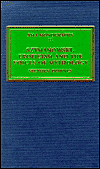 Even a superficial acquaintance with the facts of Szymanowski’s life reveals a number of important aspects which emerge as themes or perspectives on how his music developed. The most obvious musical trend was his aim to create truly European music (hence his travels to Austria, Germany, Italy and England), but also to establish a Polish identity to his style. Another aspect of his life is his ability to face terrible circumstances and still maintain an outstanding creative output. A third feature of his music, and the philosophy that accompanies it, is his long-standing association with eroticism and mythology. It greatly affected his compositions from the years 1914-17, notably but not exclusively the orchestral Love Songs of the Hafiz op.26, the Third Symphony, the First Violin Concerto, Mythes, Métopes and Masques, and the Songs of a Fairy Princess. Both eroticism and mythology are fundamental to the understanding of Szymanowski’s opera, Król Roger. While less evident in the works of the composer’s last period, some of the spirit of these themes can be found in some of his final works. It is a topic that Stephen Downes explores in his compact monograph, a study that is very much part of what has become known as ‘The New Musicology’. This movement has its advantages and its disadvantages. The most important positive feature is its engagement with the ideas of philosophers whose interests lie outside the field of music, but who can cast light on aspects of music. The main disadvantage is the difficulty of the text itself. There are many terms whose meaning and significance is only well known to those acquainted with the specialist areas and the arguments can be very complicated. Nevertheless, Downes is particularly scrupulous about structuring his text methodically and very careful in marshalling all the facts and opinions to reach clearly understood conclusions. The overall aim is to make sense of the contradictions in the composer’s life: why he wanted to write Polish music but had to study and copy German music to gain his technique, what he gained from his trips to the Mediterranean and what he learned from Ravel, Debussy and Skryabin, what is the motivation behind Król Roger, and how he moved on to became a Polish Bartók or Stravinsky at the end of his life. The search is for an identity that is consistent with all these things. The themes that Downes uses to search for this ‘inner voice’ are the pessimism associated with the philosopher Schopenhauer (a late romantic theme), various mythical topics and eroticism, especially homoeroticism. Much of this text is straightforwardly presented and, provided one takes time to consider the arguments, the rewards in the understanding of the underlying motivation and momentum (or lack of it) in Szymanowski’s music are considerable. It is particularly revealing in connection with the central period of the composer’s life, the war years 1914-17 and the six years that he was working on his opera, Król Roger. In the latter Downes considers the composer’s deeper feelings and perhaps sense of guilt, but more important for the music, the latent or suppressed eroticism shown in the opera, as well as in the novel Efebos. Probably it would help to read this book alongside Jim Samson’s perceptive article in The Musical Times(‘Szymanowski and Polish Nationalism’, March 1990, pp.135-137), which covers some of the same points from a much more traditional perspective.
Even a superficial acquaintance with the facts of Szymanowski’s life reveals a number of important aspects which emerge as themes or perspectives on how his music developed. The most obvious musical trend was his aim to create truly European music (hence his travels to Austria, Germany, Italy and England), but also to establish a Polish identity to his style. Another aspect of his life is his ability to face terrible circumstances and still maintain an outstanding creative output. A third feature of his music, and the philosophy that accompanies it, is his long-standing association with eroticism and mythology. It greatly affected his compositions from the years 1914-17, notably but not exclusively the orchestral Love Songs of the Hafiz op.26, the Third Symphony, the First Violin Concerto, Mythes, Métopes and Masques, and the Songs of a Fairy Princess. Both eroticism and mythology are fundamental to the understanding of Szymanowski’s opera, Król Roger. While less evident in the works of the composer’s last period, some of the spirit of these themes can be found in some of his final works. It is a topic that Stephen Downes explores in his compact monograph, a study that is very much part of what has become known as ‘The New Musicology’. This movement has its advantages and its disadvantages. The most important positive feature is its engagement with the ideas of philosophers whose interests lie outside the field of music, but who can cast light on aspects of music. The main disadvantage is the difficulty of the text itself. There are many terms whose meaning and significance is only well known to those acquainted with the specialist areas and the arguments can be very complicated. Nevertheless, Downes is particularly scrupulous about structuring his text methodically and very careful in marshalling all the facts and opinions to reach clearly understood conclusions. The overall aim is to make sense of the contradictions in the composer’s life: why he wanted to write Polish music but had to study and copy German music to gain his technique, what he gained from his trips to the Mediterranean and what he learned from Ravel, Debussy and Skryabin, what is the motivation behind Król Roger, and how he moved on to became a Polish Bartók or Stravinsky at the end of his life. The search is for an identity that is consistent with all these things. The themes that Downes uses to search for this ‘inner voice’ are the pessimism associated with the philosopher Schopenhauer (a late romantic theme), various mythical topics and eroticism, especially homoeroticism. Much of this text is straightforwardly presented and, provided one takes time to consider the arguments, the rewards in the understanding of the underlying motivation and momentum (or lack of it) in Szymanowski’s music are considerable. It is particularly revealing in connection with the central period of the composer’s life, the war years 1914-17 and the six years that he was working on his opera, Król Roger. In the latter Downes considers the composer’s deeper feelings and perhaps sense of guilt, but more important for the music, the latent or suppressed eroticism shown in the opera, as well as in the novel Efebos. Probably it would help to read this book alongside Jim Samson’s perceptive article in The Musical Times(‘Szymanowski and Polish Nationalism’, March 1990, pp.135-137), which covers some of the same points from a much more traditional perspective.
Music Book Review
By Gary Fitelberg
POLISH PIANO MUSIC
Works by Paderewski, Scharwenka, Moszkowski and Szymanowski
Introduction by Robert Rimm
1999. Dover Publications. Paperback
A collection of compositions for the piano lover, featuring four Polish composers and their compositions.
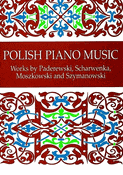 FRANZ XAVER SCHARWENKA (1850-1924)
FRANZ XAVER SCHARWENKA (1850-1924)
Polish National Dances (Op.3)
– No. 1 in E-flat minor
– No. 2 in F-sharp minor
– No. 6 in C-sharp minor
– No. 9 in B minor
Barcarolle in E minor (Op. 14)
Impromptu in D Major (Op. 17)
Staccato Étude (Op. 27, No. 3)
Polonaise in F Minor (Op. 42)
MORITZ MOSZKOWSKI (1854-1925)
Sereneta (op. 15, No. 1)
En automne (Op.36, No. 4)
Étincelles (Op. 36, No. 6)
Caprice espagnol (Op. 36. No. 6)
Siciliano (Op.42, No. 2)
Guitarre (Op.45, No. 2)
La jongluese (Op.52, No.4)
Krakowiak in G Major (Op. 55, No. 4)
IGNACY JAN PADEREWSKI (1860-1941)
Krakowaik in E major (Op.5, No. 1)
Mélodie (Op. 8, No.3)
Polonaise in B major (Op. 9, No. 6)
Chant d’ amour (Op.10, No. 2)
Humoresque de concert (Op.14)
– 1. Menuet in G Major
– 3. Caprice
– 6. Cracovienne fatistique
Légende No. 1 (Op. 16, No. 1)
Nocturne in B-flat major Op. 16, No.4)
KAROL SZYMANOWSKI (1882-1937)
Four Études (Op.4)
I. Allegro moderato
II. Allegro molto
III. Andante
IV. Allegro
Métopes (Op. 29)
I. L’île des Sirénes
II.Calypso
III.Nausicaa
I can confess that I knew nothing about Scharwenka and a minimum about Moszkowski prior to researching my review. Of course, the legendary Paderewski and Szymanowski are quite a different story. I learned an important lesson – in order to teach one must learn.
While thoughts of Polish music tend to focus on Chopin and his redefinition of national dances – those evocative mazurkas and heroic polonaises – it is to four other Polish composer-pianists that we turn our attention in this exceptional volume. The composers represented in this new compilation belong to what is widely known as the “Golden Age of Piano” – roughly those years straddling the late 19th and early 20th centuries.
Born the year after Chopin’s death, FRANZ XAVER SCHARWENKA was considered one of his greatest interpreters and a pianist-composer in his own right, esteemed by no less than Liszt, Brahms, Tchaikovsky and Mahler. The best of his works, including the justly famous Polish National Dances contained in this volume, may be placed on a plane with Chopin’s mazurkas. Similarly acclaimed as a composer, pianist and teacher, Scharwenka’s contemporary MORITZ MOSZKOWSKI was famous for salon music of the highest order, that elegant drawing-room entertainment so popular in Old Europe. His brilliant Étincelleswas a regular encore at Horowitz’s recitals, and the charming Guitarre is known worldwide. Both works appear here along with six other Moszkowski gems.
IGNACY JAN PADEREWSKI’s involvement with Polish nationalism – he was elected Premier of Poland in 1919 – conferred on the pianist a stature exceeding his already legendary status as a musician. Known for his charming and endearing Menuet, he also took much from Poland’s musical traditions in such compelling pieces as his Krakowiakand Poloniase in B major (included here along with his Menuet, Nocturne, and five other favorites). With KAROL SZYMANOWSKI, we enter a music world influenced by Scraibin, Debussy and Stravinsky, as well as by Chopin’s chromatic innovations, and by contact with Magyar folk music and Arab culture. Szymanowski brought the Polish voice into the 20th century, fusing these sources into exotic and ecstatic creations. A special favorite of Arthur Rubenstein, Szymanowski is represented here by his brilliant Four Études and mystical Métopes.
The excellent introduction by Robert Rimm, educator and pianist, provides the reader with a brief factual and historical context and comparison of these four composers. Every detail in this sheet music is given to ensure its adherence to the original. Even the dedications are preserved for posterity.
It is nice to know that these works will not be forgotten. Future generations of pianists will be able to carry on the tradition of these compositions and resurrect the reputations of these composers for years to come. One can thank the foresight of the publishers of such editions for preserving the Polish legacy in piano repertoire.
Discography
Rafał Blechacz Release
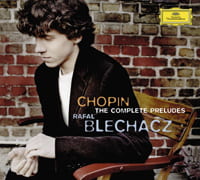 CHOPIN the Complete Preludes
CHOPIN the Complete Preludes
Frederic Chopin: 24 Preludes Op. 28; Prelude in A flat Opus Posth. ; Prelude Op. 45; Two Nocturnes Op. 62
Rafał Blechacz, piano
DG 477 6592
This is Rafał Blechacz’s first release with Deutsche Grammophon. Recorded in one week, it presents a complete set of Chopin’s Preludes with a sprinkle of two Nocturnes. The fact that Rafał Blechacz is the first Polish winner of Chopin competition since Zimmerman and his extreme popularity in Poland already has helped to establish a gold status in its first day of sale in Poland. Blechacz’s contract with DG includes three albums – the next CD will be also a solo release, most likely not a Chopin repertoire, and the third will include Chopin’s Piano Concertos. For information about the artist please visit www.rafalblechacz.com
Preisner’s New CD
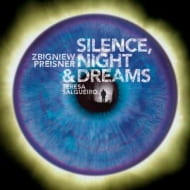 Zbigniew Preisner – Silence, Night and Dreams
Zbigniew Preisner – Silence, Night and Dreams
EMI Classics 0094639399925
“Zbigniew Preisner, the composer of award-winning scores to films by Krzystof Kieslowski, Louis Malle, Agnieszka Holland and many others, has completed his latest orchestral project. Silence, Night and Dreams for orchestra, choir and soloists. The score incorporates texts from the Book of Job and the Gospel According to St. Matthew, and has a Preface by the Polish lawyer, screenwriter and politician Krzysztof Piesiewicz. The performers are the Aukso Chamber Orchestra of Tychy, under the baton of Marek Moś, Camerata Silesia, boy soprano Thomas Cully (from Libera) and Teresa Salgueiro, star singer of the Portuguese hit group Madredeus. ”
[from the EMI Classics website]
Preisner’s CD went on sale on September 17 and already is certified Gold in Poland. To find out more about the composer and the work please visit www.preisner.com and www.emiclassics.com. A promotional video from EMI is also available on YouTube.
Richter, Soviet Years: Vol. 5
 Sviatoslav Richter, Soviet Years: Vol. 5
Sviatoslav Richter, Soviet Years: Vol. 5
Pyotr Tchaikovsky: Grande Sonate en sol majeur op.37; Karol Szymanowski: Piano Sonata no.2 in A major op.21; Serge Prokofiev: Piano Sonata no.7 in B flat major op.83
Ankh Productions
On October 1st, 2007, Ankh Productions releases its volume 5 in its series of re-mastered recordings of performances by the great Russian pianist, Sviatoslav Richter (1915-1997). Volume 5 features Richter’s live performances from November 1954 in Warsaw, including an outstanding performance of Szymanowski Piano Sonata no.2 in A major op.21 and possibly the best example of Richter’s interpretation of Prokofiev. Despite difficulties with the original tape, a Soviet recording from the 50s, the final result is excellent – a historical moment worth reliving.
New From DUX
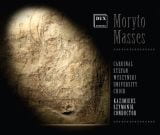 Masses – Moryto
Masses – Moryto
Stanisław Moryto: Msza Legnicka [Legnica Mass]; Missa solemnis. Hommage a Josquin Desprez; Missa brevis pro defunctis
Cardinal Stefana Wyszyńskiego University Choir; Father Kazimierz Szymonik, cond. ; Barbara Sobstyl-Szczerbaczewicz, soprano; Aneta Łukaszewicz, mezzo-soprano; Michał Sławecki, organ; Tomasz Piętak, baritone; Maciej Nerkowski, baritone; Brass Ensemble
DUX0571
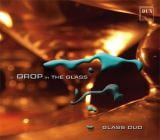 a DROP in THE GLASS
a DROP in THE GLASS
Modest Mussorgsky: Pictures at an Exhibition; Wolfgang Amadeus Mozart: Andante from Piano Concerto No. 21 (KV 467); Johann Sebastian Bach: 2-part Invention No. 8; Edvard Grieg: Morning Mood, Anitra’s Dance, In the Hall of the Mountain King from Peer Gynt; Frédéric Chopin: Prelude Op. 28, No. 4; Béla Bartók: Romanian Folk Dances; Pyotr Ilyich Tchaikovsky: Flower Waltz
Glass Duo: Anna Szafraniec and Arkadiusz Szafraniec – glass harps
DUX0590
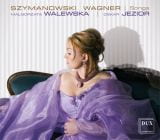 Songs. Szymanowski – Wagner
Songs. Szymanowski – Wagner
Karol Szymanowski: Święty Boże op. 5 nr 1; Jestem i płaczę op. 5 nr 2; Daleko został cały świat op. 2 nr 1; Łabędź op. 7; Samotny księżyc op. 31 nr 1a; Sleep now op. 54 nr 2; Rain has fallen op. 54 nr 6; Winds of May op. 54 nr 7; Mein Herz op. 41 nr 1; Der junge Prinz (1) op. 41 nr 2; Der junge Prinz (2) op. 41 nr 3; Das letzte Lied op. 41 nr 4; Richard Wagner: Wesendonk-Lieder: Der Engel; Stehe still!; Im Treibhaus; Schmerzen; Träume
Małgorzata Walewska, mezzo-soprano; Oskar Jezior, piano
DUX0573
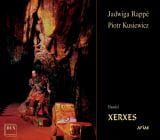 Xerxes – Arias. Händel
Xerxes – Arias. Händel
George Frideric Händel: Arias from Opera Xerxes
Piotr Kusiewicz (tenor) – Serse; Jadwiga Rappé (alto) – Amastre; Warsaw Soloists Concerto Avenna; Basso continuo: Ewa Gizińska-Mysińska – cello, Danuta Kojro – harpsichord, Krzysztof Wroniszewski, Jacek Polański – oboes concertato; Andrzej Mysiński – artistic direction
DUX0377
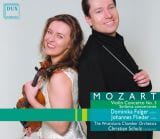 Mozart – Koncert skrzypcowy G-dur, Symfonia Es-dur
Mozart – Koncert skrzypcowy G-dur, Symfonia Es-dur
Wolfgang Amadeus Mozart: Violin Concerto in G major K.216; Sinfonia concertante in E flat major K.364
Dominika Falger – violin; Johannes Flieder – viola; The WRATISLAVIA Chamber Orchestra; Christian Schulz – conductor
DUX0454
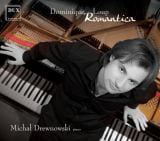 Romantica
Romantica
Tommaso Albinoni: Adagio; Johann Sebastian Bach: Jesus bleibet meine Freude, BWV 147; Sergey Rachmaninov: Vocalise Op.34 No.14; Traditional French Songs (arr. Dominique Loup): I. Il est né le divin Enfant; II. La marche des Rois; III. Entre le bouf et l’âne gris; IV. Mon beau sapin; V. Les compagnons de la Marjolaine; VI. Fait dodo, Cola mon petit frere; Dominique Loup: Homage To Chopin; The Prayer; My first waltz; 4 Romantic Studies (No. 6, No. 11, No. 21, No. 20); Modern times; Ragtime; Boogie
Michał Drewnowski – piano
DUX0566
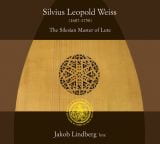 The Silesian Master of Lute
The Silesian Master of Lute
Silvius Leopold Weiss: Sonata in F major: Sächsische Landes- und Universitätsbibliothek Dresden Ms. Mus. 2841-V-1; Tombeau sur la mort de M. Cajetan Baron d’Hartig; Sonata in D major; Capriccio in D major; Ciacona in G minor
Jakob Lindberg – lute
DUX0581
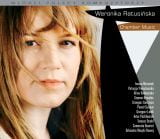 Weronika Ratusińska – Chamber Music
Weronika Ratusińska – Chamber Music
Weronika Ratusińska: Nimfy for soprano saxophone and harpsichord; Trio for clarinet, cello and piano; Amarcord for violin and piano; 2nd String Quartet “The Last Moments”; Concerto for amplified violin, instrumental ensemble and tape
Paweł Gusnar – saxophone; Alina Ratkowska – harpsichord; Tomasz Strahl – cello; Grzegorz Gorczyca – piano; Patrycja Piekutowska – violin; Iwona Mironiuk – piano; Camerata Quartet; Grzegorz Lalek – violin; Orkiestra Muzyki Nowej, Szymon Bywalec – conductor
DUX0580
 The Garden’s Gates
The Garden’s Gates
Szabolcs Esztényi: SIX STUDIES for two pianos; THREE NEW STUDIES for two pianos; CONCERTINO for two pianos; THE GARDEN’S GATES for two pianos; TOCCATA for two pianos
Iwona Mironiuk and Szabolcs Esztényi, pianos
DUX0593
Performances
Kurkowicz Plays Penderecki
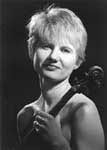 The Chameleon Arts Ensemble opened their 10th anniversary season at the Goethe Institute in Boston on September 29th, with a re-imagining of their very first concert, a five-course feast of trios celebrating the many flavors of Chameleon. Polish violinist Joanna Kurkowicz, the ensemble’s artistic advisor, performed K. Penderecki’s String Trio with Scott Woolweaver on viola and Rafael Popper-Keizer on cello. Other pieces on the program were Ludwig van Beethoven – Trio in G Major for flute, bassoon & piano; Ingolf Dahl – Concerto a Tre for clarinet, violin & cello; Daron Hagen – Harp Trio (Boston Premiere); and Johannes Brahms – Piano Trio No. 3 in c minor.
The Chameleon Arts Ensemble opened their 10th anniversary season at the Goethe Institute in Boston on September 29th, with a re-imagining of their very first concert, a five-course feast of trios celebrating the many flavors of Chameleon. Polish violinist Joanna Kurkowicz, the ensemble’s artistic advisor, performed K. Penderecki’s String Trio with Scott Woolweaver on viola and Rafael Popper-Keizer on cello. Other pieces on the program were Ludwig van Beethoven – Trio in G Major for flute, bassoon & piano; Ingolf Dahl – Concerto a Tre for clarinet, violin & cello; Daron Hagen – Harp Trio (Boston Premiere); and Johannes Brahms – Piano Trio No. 3 in c minor.
ECCS Broadcast On CBC Radio 2
On Sunday, 30 September, at 11:00 P.M. , CBC Radio featured Edmonton Composers’ Concert Society works for organ and string orchestra, performed on 31 July 2007 during the “Windspiration – International Festival of Organ Music. ” The Edmonton Chamber Players orchestra was led by the Polish composer and conductor, Maestro Jacek Rogala.
For now CBC Radio has selected three pieces out of five premiered during the concert. Hopefully the other two will be aired as well. The full program will be available on CBC Radio 2 website, www.cbc.ca/radio2/index.html under “Concerts on Demand,” soon. You will have access to these recordings from one year from the broadcast date.
This concert was made possible by a grant from The Canada Council for the Arts. Also, warm thanks to the Canadian Polish Congress and Polish Canadian Women’s Federation.
[PGM]
Anniversaries
Born This Month
- 3 October 1882 – Karol SZYMANOWSKI, composer, pianist, (d. 29 March 1937)
- 3 October 1923 – Stanislaw SKROWACZEWSKI, composer and conductor
- 4 October 1910 – Eugenia UMINSKA, violinist
- 6 October 1885 – Karol STROMENGER, teacher, composer, publicist, music critic (d. 1975)
- 9 October 1924 – Regina SMENDZIANKA, pianist
- 10 October 1910 – Henryk SWOLKIEN, music critic, composer
- 14 October 1910 – Lech MIKLASZEWSKI, children’s song writer, author of popular radio music shows for children, music publicist (d. 1992)
- 16 October 1867 – Ferdynand HOESICK, music critic, publisher (d. 13 April 1941)
- 18 October 1879 – Grzegorz FITELBERG, conductor, violinist, composer (d. 10 June 1953)
- 20 October 1819 – Karol MIKULI, pianist, composer, conductor, Chopin’s student (d. 21 May 1897)
- 20 October 1935 – Henryk SWOLKIEN, composer, publicist, music promoter (d. 1990)
- 25 October 1868 – Michal SWIERZYNSKI, composer, conductor (d. 30 June 1957)
- 30 October 1904 – Alfred GRADSTEIN, composer, activist (d. 29 September 1954)
Died This Month
- 1 October 1990 – Andrzej KRZANOWSKI, composer, accordion player (b. 1951)
- 1 October 1861 – Tekla Justyna KRZYZANOWSKA, pianist, Chopin’s mother (b. September 1780)
- 7 October 1854 – Adolf CICHOWSKI, Chopin’s friend, officer and civil servant (b.1794)
- 17 October 1849 – Fryderyk CHOPIN, composer and pianist (b. 1 March (also listed as February 22) 1810)
- 17 October 1938 – Aleksander MICHALOWSKI, pianist, composer, Tausig’s student (b. 5 May 1851)
- 18 October 1962 – Maria SZCZEPANSKA, musicologist (b. 13 May 1902)
- 21 October 1837 – Michal Józef GUZIKOW, folk musician (b. 1806)
- 27 October 1991 – Andrzej PANUFNIK, composer and conductor (b. 24 September 1914)
- 30 October 1912 – Jan Karol GALL, composer and conductor (b. 18 August 1856)
- 31 October 1952 – Adolf CHYBINSKI, musicologist (b. 29 April 1880)

